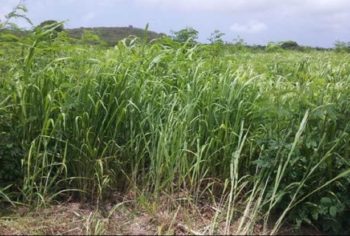Is there enough room for bioenergy in agriculture?
Yes, if it is done right there are sufficient opportunities in agriculture for food and feed production, as well as bioenergy and biobased products.
Significant knowledge and competence are available to govern bioenergy expansion in agriculture so as to harness opportunities and reduce risks of negative impacts. Specific bioenergy options – such as biofuels produced from edible vs. non-edible feedstocks – are not good or bad per se. Guidelines and support packages for governments and practitioners exist which demonstrate a number of practical approaches to sustainably meet food, feed and biofuel demand in the coming decades. Some examples:
1. Identify areas best suited for bioenergy production (agro-ecological zoning) through inclusive multi-stakeholder processes.
2. Sustainable intensification and landscape planning can make land available for additional production while enhancing ecosystem services.
 Sustainable intensification = increasing output per unit of land while maintaining or improving ecosystems’ health and productive capacity.
Sustainable intensification = increasing output per unit of land while maintaining or improving ecosystems’ health and productive capacity.- Novel biomass production systems can be integrated into agriculture and forestry landscapes. Such systems may use crop rotations, flexible crops (i.e., food/feed crops that also provide bioenergy feedstock), multiple cropping, intercropping across seasons, and agroforestry approaches (in which nitrogen-fixing energy crops boost yields of neighboring food crops).
- Integrated systems can produce food, feed, bioenergy feedstocks and other biobased products from the same land area. They can also enhance biodiversity and mitigate land use impacts such as soil erosion, soil compaction, salinization, and eutrophication of surface waters related to excess fertilization.
3. Develop good management practices at a local level for growing a mix of high-yielding food and fuel crops in different soils and climates.
4. Secure land tenure can give farmers financial incentives to manage their land for higher yields while sustaining soil productivity.
5. Promote more widespread use of modern farming techniques
6. Utilize organic residues within healthy soil conditions
 As food production expands to feed growing populations, this will also induce more organic residues, both on the field and in processing. Most crop residues are currently left in the field. Depending on factors such as climate, soil conditions, topography and crop type, a portion of these residues can be removed; enough residues should be left to maintain long term soil productivity.
As food production expands to feed growing populations, this will also induce more organic residues, both on the field and in processing. Most crop residues are currently left in the field. Depending on factors such as climate, soil conditions, topography and crop type, a portion of these residues can be removed; enough residues should be left to maintain long term soil productivity.
7. Reduce losses in the food chain, which can also lower the pressure on land
- Food chain losses could be reduced by promoting good harvesting techniques, investing in storage and refrigeration facilities, developing transportation infrastructure to safely deliver food to markets, discounting imperfect food items to encourage their sale, modifying labels so food is not discarded prematurely, and educating consumers to better match food purchases to their needs.
Acknowledgement:
This text is derived from a common paper ‘Bioenergy for Sustainable Development’ of IRENA, IEA Bioenergy and FAO.
Further reading:
- Bioenergy for Sustainable Development. IRENA, IEA Bioenergy and FAO. January 2017. https://www.ieabioenergy.com/publications/bioenergy-for-sustainable-development/
- Growing sustainably with bioenergy. IRENA newsfeed. June 2017. https://irenanewsroom.org/2017/06/21/growing-sustainably-with-bioenergy/
- Mobilizing sustainable bioenergy supply chains: Opportunities for agriculture. Summary and Conclusions from the IEA Bioenergy ExCo77 Workshop, Rome, 17 May 2016. https://www.ieabioenergy.com/publications/ws20-mobilising-sustainable-bioenergy-supply-chains-opportunities-for-agriculture/
- Mobilizing sustainable bioenergy supply chains. IEA Bioenergy, November 2015 + various case study reports. https://www.ieabioenergy.com/publications/mobilizing-sustainable-bioenergy-supply-chains/
- Boosting biofuels – Sustainable Paths to Greater Energy Security. IRENA, 2016. http://www.irena.org/DocumentDownloads/Publications/IRENA_Boosting_Biofuels_2016.pdf
- FAO’s Bioenergy and Food Security (BEFS approach) – Implementation Guide. FAO, 2014. http://www.fao.org/docrep/019/i3672e/i3672e.pdf
- FAO Sustainable Bioenergy Decision Support Tool, http://www.bioenergydecisiontool.org/
Last editing: October 6, 2017


